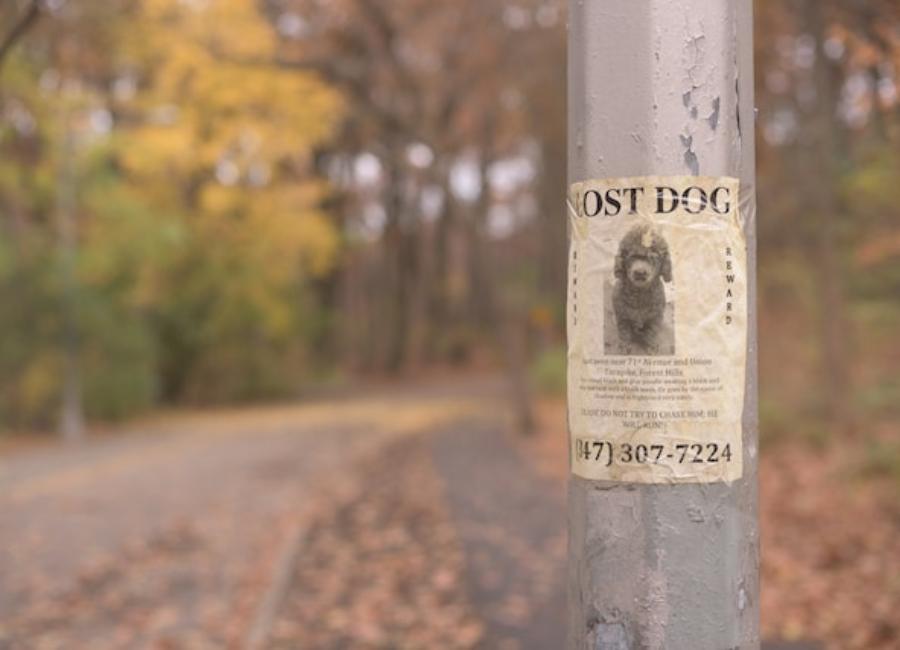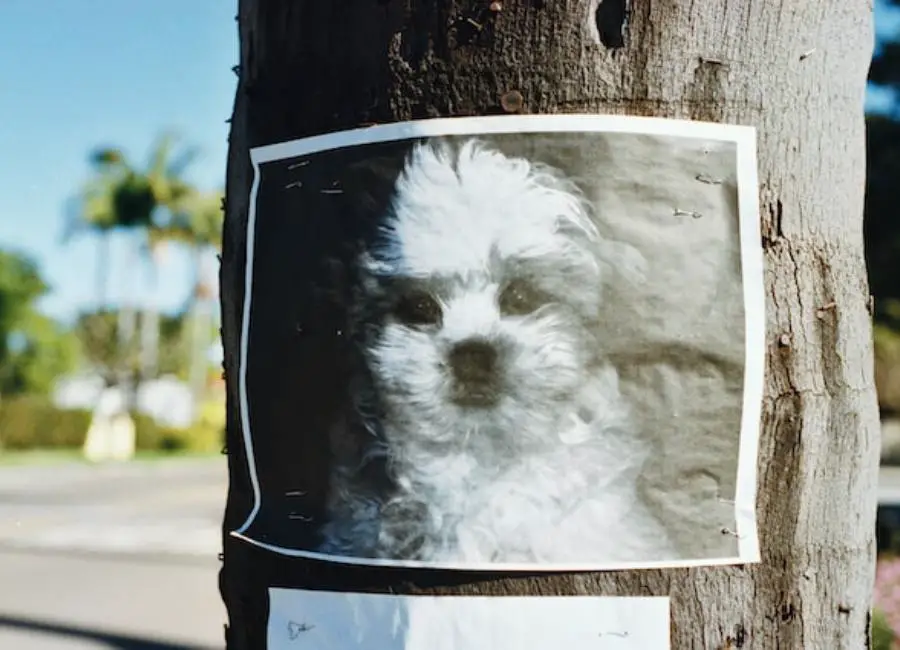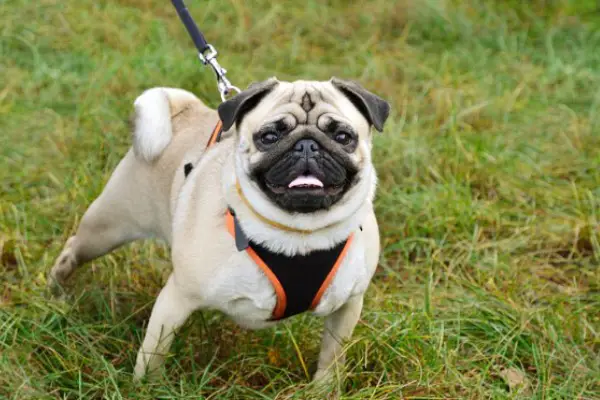11 Tips On How to Find a Lost Dog

In this blog post, we’ll share some tried and tested tips on how to find a lost dog.
Are you worried about your furry friend who has gone missing? Losing a dog can be a terrifying experience, but you’re not alone.
Thousands of dog owners go through the same ordeal every year. If you’re in the same situation, don’t worry, we’ve got your back!
So, grab a pen and paper and get ready to take notes!
Why dogs may get lost
Here are some common reasons why dogs may get lost
- Lack of identification: If a dog does not have identification such as tags or a microchip, it may be difficult for the finder to locate its owner.
- Fear and anxiety: Dogs may become frightened and run away if they are scared by loud noises such as thunderstorms, fireworks, or other animals.
- Curiosity and exploration: Dogs are curious by nature and may wander off to explore the sights, sounds, and smells of the world around them.
- Unfamiliar territory: When in a new place, a dog may become lost if it is not familiar with its surroundings.
- Separation anxiety: Dogs may become anxious when left alone and will try to escape to find their owner if they feel stressed or lonely.
- Lack of supervision: Dogs that are allowed to roam freely and not supervised may wander off or become lost.
- Health problems: If a dog is ill or injured, it may become disoriented and unable to find its way home.
- Theft: Sadly, some dogs are stolen by thieves who then sell or keep the dog for their own purposes.
- Accidental escape: Dogs may accidentally escape from their homes or yards if they are not properly secured or supervised.
It’s important to always supervise your dog and ensure they have proper identification in the form of tags, a collar, and/or a microchip to increase the chances of their safe return if they do become lost.
How to Find a Lost Dog

The following are some common ways to find a lost dog:
1. Search the neighborhood
As soon as you realize your dog is missing, begin your search by strolling or driving about your area while yelling your dog’s name.
Look for walking areas for your dog, parks, adjacent forests or trails, or other potential locations.
A flyer with a picture of your dog and your contact information should be left with your neighbors after you ask them if they have seen your dog.
Examine areas where your dog may have sought refuge or cover, such as behind buildings, under shrubs, or under decks.
Ask your neighbors, joggers, or anybody else who may have recently seen your dog.
In order to help you lure your dog out of hiding, don’t forget to bring a leash, cookies, and his favorite toy.
Look for any signs that your dog has been around, such as overturned trash cans or dug-up holes.
2. Contact local animal shelters
The moment you find your dog is gone, you should get in touch with the nearest animal shelter.
When looking for a lost dog, animal shelters and rescue groups can be great resources.
The lost and found department of shelters is frequently present, and they can check their files to see whether your dog has been brought in.
Inform them about the breed, age, size, and any other distinctive characteristics of your dog.
Give them your contact information and enquire about visiting their facility to look for your dog.
A lost pet alert may be posted on the social media pages of some animal shelters.
3. Put up posters
It can be highly beneficial to make posters that include a clear image of your dog, your contact information, and a brief description of where and when he was last seen.
Put the posters in prominent places throughout your neighborhood, such as parks, pet businesses, and community centers.
Use bold colors and huge font sizes to make your documents simple to read from a distance.
Facebook, Twitter, and Instagram are just a few of the social media sites that might help you find your missing dog quickly.
Upload a photo of your dog and provide all relevant information, such as the place they were last seen, the date and time they disappeared, and any special requirements or health issues.
Ask your friends and followers to share the post to reach a wider audience.
Be sure to include your contact information in case someone sees your dog and needs to reach you.
5. Check local CCTV
Consult any nearby residents or businesses that may have CCTV cameras.
You might be able to find them if they recorded your dog on camera.
If you do come across any video, make sure to thoroughly watch it.
If you learn anything helpful, get in touch with the camera’s owner to see if they can offer any extra help in locating your dog.
6. Check local newspapers
Search your local newspapers in case someone has found your dog and put an advertisement up.
Consider posting a classified or newspaper ad with a description of your dog and your contact information.
7. Contact local veterinarians
Local veterinarian practices might be an excellent source for lost pet searches.
Local vets may be aware of area animal sightings or may have even spotted your dog.
Give them a description of your dog when you call. They might have witnessed him or heard of someone who did.
Also, you might request that they keep an eye out for any fresh patients who resemble your dog.
8. Use scent tracking
Dogs can follow a familiar scent, so putting something with your fragrance in the vicinity of where your dog was last spotted might aid in guiding them back there.
Your dog can return home more easily if you leave a toy or blanket with his scent outside your house.
A secure location should be chosen for the item, and you should periodically check to see if your dog has returned.
9. Use online lost and found pet databases
There are many websites and apps dedicated to helping pet owners find their lost animals.
Some examples include Pawboost, Lostmydoggie.com, LostDogsOfAmerica.org, FidoFinder.com, and Petfinder, etc.
These platforms allow you to post information about your lost dog and often have a large network of pet lovers and animal welfare organizations who can help spread the word.
10. Offer a reward
Giving someone a prize is a good method to get them to look out for your lost dog.
Upon your pet’s safe return, you can provide a monetary reward, a gift card, or some other kind of incentive.
Provide a prize amount description in all of your posters and social media posts.
11. Stay persistent
Don’t give up looking for your lost dog; keep looking.
Get in touch with local animal shelters, update your social media accounts frequently, and continue to put up posters and signs throughout your community.
When looking for a missing dog, keep in mind that you should move swiftly because they may quickly cover a lot of lands and become challenging to locate once they are out of the immediate region.
Learn more about training a dog not to run away.
Ways to prevent your dog from getting lost
Here are some common ways to prevent your dog from getting lost:
- Always keep your dog on a leash when you are outside with them.
- Make sure your dog is properly trained to come when called.
- Use a dog GPS tracking device or an identification tag with your contact information on it.
- Ensure your fence is secure and high enough so that your dog cannot jump over it.
- Close your doors and windows to keep your dog from wandering out of your home.
- Use dog gates to prevent your dog from bolting out the front door.
- Keep your dog entertained with toys and activities to prevent them from becoming bored and wanting to explore.
- Consider enrolling your dog in obedience classes to improve their obedience skills and increase the chances of them returning when called.
- Make sure your dog always has a collar and tags on, so they can be easily identified and returned if they do become lost.
Learn more about caring for your dog.
Frequently Asked Questions
What should I do immediately after realizing my dog is lost?
The first step is to start searching your immediate surroundings. Check places in your neighborhood where your dog may have gone (like neighbors’ yards, parks, or trails), and call out your dog’s name while looking.
If you still can’t find your dog, contact local animal shelters, rescue groups, and veterinarians.
What are some effective ways to search for a lost dog?
There are several ways to search for a lost dog. Some effective methods include putting up posters in your neighborhood, reaching out on social media platforms to local groups and lost and found pages, driving or walking around your neighborhood and surrounding areas, and even hiring a professional pet detective.
Is it helpful to offer a reward for finding a lost dog?
Yes, offering a reward may incentivize people to keep an eye out for your lost dog and report back to you with any sightings or information.
Be sure to advertise the reward along with detailed information about your dog (like their breed, size, color, and any identifiable markings) on social media and local lost and found pages.
What steps can I take to prevent my dog from getting lost in the first place?
To reduce the risk of your dog getting lost, it’s important to take preventative measures such as keeping your dog on a leash or in a secure, fenced area, ensuring that they are properly tagged and microchipped, and keeping them indoors during fireworks or other noisy events.
Should I contact the police if my dog is lost?
It’s a good idea to notify your local police department about your lost dog, as they may be able to provide assistance in searching for your pet or notifying you if your dog is found by a member of the public or animal control.
What should I do if I find a stray dog that might be someone’s lost pet?
If you find a stray dog, check for identification tags or a microchip, which can help you reunite the dog with its owner.
If there are no identification tags, contact your local animal control or shelter and report that you have found a lost dog.
They may be able to scan the dog for a microchip or help you find the dog’s owner.
Learn more about why your dog keeps running away.
Conclusion
Losing a dog can be a stressful and emotional experience, but with the right steps, you can increase your chances of bringing your furry friend back home.
Remember to stay calm and act quickly by checking with local animal shelters and using social media to spread the word.
Don’t forget to also create flyers and posters with a clear and detailed description of your dog, and include a contact number where you can be reached.
With some persistence and a little bit of luck, you may just be able to find your lost dog and be reunited once again!





![Boston Terrier Life Span [Factors to Consider] Boston Terrier Life Span](https://petcreeks.com/wp-content/uploads/2023/12/pexels-shvets-production-8415166.jpg)
